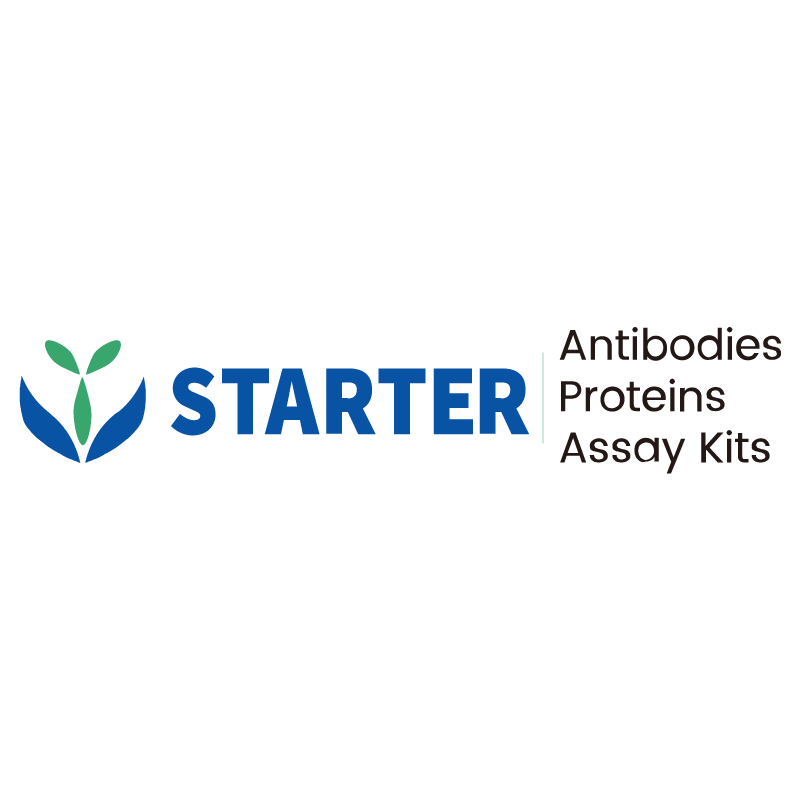WB result of Atg13 Recombinant Rabbit mAb
Primary antibody: Atg13 Recombinant Rabbit mAb at 1/1000 dilution
Lane 1: HeLa whole cell lysate 20 µg
Lane 2: PANC-1 whole cell lysate 20 µg
Lane 3: Jurkat whole cell lysate 20 µg
Lane 4: MCF7 whole cell lysate 20 µg
Secondary antibody: Goat Anti-rabbit IgG, (H+L), HRP conjugated at 1/10000 dilution
Predicted MW: 56 kDa
Observed MW: 65 kDa
Product Details
Product Details
Product Specification
| Host | Rabbit |
| Antigen | Atg13 |
| Synonyms | Autophagy-related protein 13; KIAA0652; ATG13 |
| Immunogen | Synthetic Peptide |
| Location | Cytoplasm |
| Accession | O75143 |
| Clone Number | S-2534-22 |
| Antibody Type | Recombinant mAb |
| Isotype | IgG |
| Application | WB, IHC-P |
| Reactivity | Hu, Ms, Rt |
| Positive Sample | HeLa, PANC-1, Jurkat, MCF7, NIH/3T3, mouse brain, PC-12 |
| Purification | Protein A |
| Concentration | 0.5 mg/ml |
| Conjugation | Unconjugated |
| Physical Appearance | Liquid |
| Storage Buffer | PBS, 40% Glycerol, 0.05% BSA, 0.03% Proclin 300 |
| Stability & Storage | 12 months from date of receipt / reconstitution, -20 °C as supplied |
Dilution
| application | dilution | species |
| WB | 1:1000 | Hu, Ms, Rt |
| IHC-P | 1:1000 | Hu, Ms, Rt |
Background
Atg13 is an essential scaffold protein in the autophagy-initiation ULK1 complex, where it links the kinase ULK1 to FIP200 and Atg101 to form a stable platform that integrates nutrient-dependent signals from mTORC1 and AMPK; upon starvation, dephosphorylation of Atg13 releases mTORC1 inhibition, allowing ULK1 to phosphorylate Atg13 itself and other downstream targets to trigger phagophore nucleation, while constitutive phosphorylation of Atg13 under nutrient-rich conditions keeps autophagy suppressed, and mutations or depletion of Atg13 in model organisms cause severe defects in bulk and selective autophagy, underscoring its central role in maintaining cellular homeostasis through dynamic regulation of autophagic flux.
Picture
Picture
Western Blot
WB result of Atg13 Recombinant Rabbit mAb
Primary antibody: Atg13 Recombinant Rabbit mAb at 1/1000 dilution
Lane 1: NIH/3T3 whole cell lysate 20 µg
Lane 2: mouse brain lysate 20 µg
Secondary antibody: Goat Anti-rabbit IgG, (H+L), HRP conjugated at 1/10000 dilution
Predicted MW: 56 kDa
Observed MW: 65 kDa
WB result of Atg13 Recombinant Rabbit mAb
Primary antibody: Atg13 Recombinant Rabbit mAb at 1/1000 dilution
Lane 1: PC-12 whole cell lysate 20 µg
Secondary antibody: Goat Anti-rabbit IgG, (H+L), HRP conjugated at 1/10000 dilution
Predicted MW: 56 kDa
Observed MW: 65 kDa
Immunohistochemistry
IHC shows positive staining in paraffin-embedded human cerebral cortex. Anti-Atg13 antibody was used at 1/1000 dilution, followed by a HRP Polymer for Mouse & Rabbit IgG (ready to use). Counterstained with hematoxylin. Heat mediated antigen retrieval with Tris/EDTA buffer pH9.0 was performed before commencing with IHC staining protocol.
IHC shows positive staining in paraffin-embedded human endometrial cancer. Anti-Atg13 antibody was used at 1/1000 dilution, followed by a HRP Polymer for Mouse & Rabbit IgG (ready to use). Counterstained with hematoxylin. Heat mediated antigen retrieval with Tris/EDTA buffer pH9.0 was performed before commencing with IHC staining protocol.
IHC shows positive staining in paraffin-embedded mouse cerebral cortex. Anti-Atg13 antibody was used at 1/1000 dilution, followed by a HRP Polymer for Mouse & Rabbit IgG (ready to use). Counterstained with hematoxylin. Heat mediated antigen retrieval with Tris/EDTA buffer pH9.0 was performed before commencing with IHC staining protocol.
IHC shows positive staining in paraffin-embedded rat cerebral cortex. Anti-Atg13 antibody was used at 1/1000 dilution, followed by a HRP Polymer for Mouse & Rabbit IgG (ready to use). Counterstained with hematoxylin. Heat mediated antigen retrieval with Tris/EDTA buffer pH9.0 was performed before commencing with IHC staining protocol.


